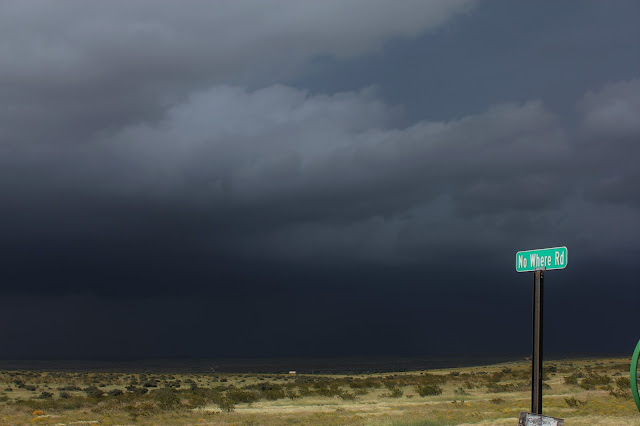My Wink/Kermit Texas Chase 5-4-2024.
May 4, 2024.
Wink/Kermit, Texas 3:46 PM CDT.
GRAnalysist2 Base Reflectivity (BR).
NWS Midland Dual Pol (Sails) Doppler Radar.Blog Updated Monday, May 6, 2024.
My third chase of the week found me leaving Carlsbad and headed towards Eunice, the south to Jal, Kermit, and finally Wink, Texas Saturday.
A strong cold front had sunk slowly southward through the southeastern Plains of New Mexico and West Texas overnight into the morning. Very gusty northeasterly winds accompanied the frontal passage. Areas of blowing dust and hazy overcast skies with low clouds were prevalent. This made it difficult to identify storm structure.
The Storm Prediction Center issued a Severe Thunderstorm Watch for Eddy and Lea Counties in southeastern New Mexico, as well as eastward across parts of West Texas. They then issued a Tornado Watch for areas south into the Permian Basin, Trans Pecos, and southward.
I caught up with the cold front sagging southward and becoming stationary in the Kermit/Wink area. My YouTube video shows what I was watching. A lone supercell thunderstorm developed along the frontal boundary and initially was moving to the northeast. It then made a right turn and started heading southeast and then eventually east.
The Wink Airport ASOS clocked a peak wind gust of 62 mph from the north-northeast at 3:52 PM CDT. During the time I was filming the storm. The public reported softball size hail (4.0" in dia) 4 miles east of Kermit at 3:40 PM CT. The public reported ping pong ball size hail (1.50" in dia) in Kermit. There was some street flooding in Kermit when I passed through town and headed back home. I am glad I didn't get caught in the core of this monster that's for sure.
I made a couple of time-lapse sections of my video and it's a little easier to see the rotation in the wall cloud and pick out the strongest of the dust whirls.
Looking at the GRAnalyst2 screenshots you can see that the strongest rotation was noted at 3:46 PM CDT just northeast of the Wink Airport and south of Kermit (yellow triangle). Radar indicated rotation from the lowest tilt of 4,000' up through 44,000'. Max normalized rotation (Nort) also occurred at this time and location.
The Volume scan and Cross Section screenshots I grabbed clearly show a strong updraft into the storm at this time. Very strong inflow was feeding into this storm.
Trying to see what going on underneath the rotating wall cloud was no easy task. I believe that I spotted a couple of tornado dust whirls on the ground. Although it's very hard to pick these out in the video due to the amount of dust in the air. Could they have been gustnadoes? Possibly. I wouldn't argue either way truthfully.
There Are None So Blind As Those Who "Will - Not" To See...107.






























Comments
Post a Comment
Your comments, questions, and feedback on this post/web page are welcome.